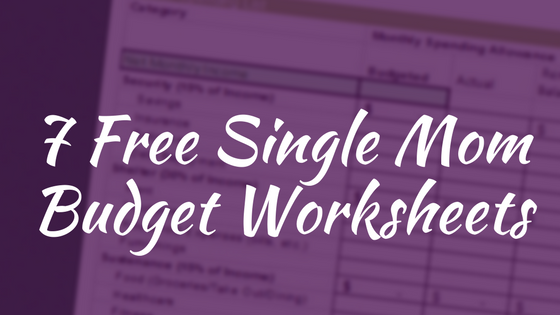New Year’s resolutions are fundamentally flawed.
The idea of doing something for an entire year is both daunting, unpractical and, frankly, a little boring.
So let’s try something new this year. We’re going to take a single resolution – getting your finances in order – and break it up into 12 easy-to-accomplish, month-long goals.
By setting up a series of manageable tasks, you’ll be able to make real month-by-month progress while staying motivated and mindful of the big picture. Because, really, what good is starting something if you can’t finish it?
1. January: Create Long-Term & Short-Term Financial Objectives
The beginning of the year is the perfect time to take stock of your financial past, present and future. Start by looking back at the previous. Was last year a success from a financial goals standpoint? Next, talk to your partner about where you want to be financially both today and tomorrow. Make sure your short-term plans are nested directly within your long-term view and both are leading to the same endpoint.
You should consider creating SMART goals for your finances. Your goals should be specific, measurable, achievable, realistic, and time-based (SMART). You could make a goal this year to finally get out of debt or build a fully-funded emergency fund. Or, you could save for a down payment on a house.
A short-term goal could be paying for all of your Christmas gifts next year with cash. If that’s actually one of your short-term goals, now is the time to start. Look at how much you spent last year on Christmas gifts. Set a budget now of what you’ll spend in December and start saving each month for that goal.
Short-Term Goal — Pay for Christmas 2017 With Cash!
- Specific. Set a specific dollar amount to save. The average American spends about $460 on gifts for family members.
- Measurable. Look at what you spent in 2016 and use that figure to budget this year.
- Achievable. If your budget is $600, you need to save $50 each paycheck.
- Realistic. Yes, you can get it done in a year if you start now.
- Time-based. You have 12 months to save for next Christmas.
2. February: Increase That Emergency Fund
It’s important to have at least three to six months of living expenses saved for the unexpected. Maybe even more if you have a large family to provide for. An emergency fund helps keep you out of debt or prevents you from increasing debt in the event of something unforeseen like the loss of a job or an unexpected home or car repair.
It’s usually best for an emergency fund to be liquid, which means it’s easily accessible from your regular old savings account. An emergency fund shouldn’t be used for any investing.
3. March: Get Serious About Paying off your Debt
Facing off with debt (credit card or otherwise) can be daunting. But not dealing with it can be crippling when trying to achieve your financial goals
Debt affects your credit and that, in turn, affects other aspects of your financial life, such as life insurance premiums, car insurance rates, job prospects, and more. (You can see how your debts are affecting your credit, for instance, by viewing your free credit report snapshot, updated every 14 days, on Credit.com.)
Take March and start a debt snowball There are two philosophies when it comes to paying off debt. You can either start your debt snowball by tackling your smallest debt first. Or, many financial experts recommend starting with the debt that has the highest interest rate first.
Starting with the smallest debt and paying that one off first (while making all of your minimum payments on your other cards) instead of the one with the largest interest rate has a psychological effect. It’s a quick win that will build momentum. It’s amazing to see yourself pay off debts. It’ll keep you motivated and hungry to pay off more.
Paying off your debts with the highest annual percentage rate (APR) is more cost-effective, since it can save you on interest.
4. April: Time for a Last Will & Testament
It’s not a pleasant topic to think about, but you don’t want to die without a will. It can often lead to your final wishes not being followed and put additional stress on your loved ones when they’re already suffering.
Having a last will and testament ensures that your desires are known and carried out correctly. Who will take care of your children if you die while they are still minors? Who will take care of them if you and your spouse die at the same time?
Children are just one of the many reasons that you should have a will. Whether you’re single, married, or have children, you don’t want the probate courts deciding important manners about your belongings and wishes.
If you don’t want to spend money on an estate attorney just yet, there are numerous online wills or forms that you can use. These resources can provide a solid starting-off point, and then you can hire an estate lawyer on an hourly basis to ensure you’ve considered everything.
Whichever route you choose for creating a will, just make sure you have a witness present and that you sign in front of a notary.
5. May: Assess Your Life Insurance Needs
Life insurance helps ensure that your family will be financially protected if you die. (Full disclosure: Haven Life, the company I work for, sells life insurance.)
If you have loved ones who depend on you for financial support and you don’t have a policy outside of work, then you’re probably not adequately covered.
Most employer-sponsored life insurance coverage only provides one or two years salary for a death benefit. That may seem like a lot to some, but the recommended amount of coverage is usually five to 10 times your annual income. And it’s important to remember that employer-sponsored coverage usually doesn’t go where you go, which means coverage usually ends when you get a new job.
Life insurance should help cover:
- Day-to-day living expenses
- A mortgage and other debts
- College costs for children
- Childcare costs
- Future healthcare costs
- Funeral and final expenses
- Charitable giving
- Any legacy you want to leave
6. June: Consolidate Your 401K Accounts
Young workers move around and take a lot of jobs. According to the Harvard Business Review, more than 20% of Millennials have job hopped within the last year. But, with all of this moving, what happens to your retirement plans? Many workers simply leave their 401K retirement plans spread across their many former employers. If you’ve changed jobs recently, March is a good time to turn your attention to consolidating your 401K retirement plans. Roll over the old accounts into your new employer’s 401K or a Traditional IRA.
By keeping all of your retirement savings in single place, you’ll have better control and more investment options at your disposal. Consolidation will also help you maintain the right asset allocation based on your current risk tolerance.
7. July: Increase Your Retirement Contributions (But Not at Your Budget’s Expense)
You can boost your retirement savings without killing your budget if you increase your contribution with every pay raise earned.
If you get a pay raise of 2%, consider increasing your monthly contributions to your 401K or Roth IRA by 1%. It’s a sneaky way to trick yourself into saving more for your retirement without feeling the pain. Especially if you can time this increase in retirement savings before you even see the larger paycheck.
8. August: Open a 529 Account
A 529 College Savings Plan is a great tool to help you save for your children’s college education. As soon as your newborn receives his or her Social Security number, consider opening a 529.
Parents (and grandparents, aunts, uncles, and other family members) can contribute after-tax dollars to the plan, which typically offers a number of different investment options. Your contributions can grow over time, and earnings are tax-free as long as you use them for qualified higher education expenses when withdrawn. You can also receive a deduction on your state income taxes in many states for 529 contributions.
9. September: September Is for Shredding
Financial statements are like weeds. If left unattended, they can grow, multiply and before you know it, take over your desk completely.
Knowing which financial documents to keep and which to shred is key.
You can shred receipts for items you aren’t going to return as soon as the purchase has posted to your account. You can destroy credit card monthly statements after you’ve received them and reconciled your purchases.
Better yet: Consider switching to digital statements. Start going through your bank, credit card and investment accounts and opt for digital statements instead of paper copies. This way, you’ll help save the environment and keep desk clutter to a minimum.
Remember, it’s important to keep monthly investment statements until you receive your year-end statement. You should keep year-end statements for at least seven years in case you get audited. The same is also true for all tax documents. You should keep supporting tax documentation for at least seven years.
Shredding your financial documents or having a digital safe haven is one of your best defenses against identity theft.
And, hey, shredding a stack of papers never stops being gratifying.
10. October: Build Your Financial Team
We all need some help in our corner and trusted advisers we can turn to.
A financial team can be a sounding board for ideas and can help you stay on track with your financial goals. You may want to consider working with a financial planner, a tax professional, insurance agent, mortgage broker and/or real estate agent. If your financial life is an enterprise, this is your personal board of directors to assist you.
Get your team in place now and then turn to them throughout the year when you need help with things like filing your taxes, adjusting your investments or even insight on if it’s a good time to put your house on the market.
11. November: Stop Giving the Government an Interest-Free Loan
Your goal should be having little-to-no income tax refund each year. Having a small refund means that you’re getting the right amount of taxes withheld from your paycheck each month.
A large income tax refund is equivalent to an interest-free loan to the government. According to IRS records, the average income tax refund in America is $3,120. That equals $260 each month that you could add back to your monthly paycheck.
Too many Americans look at an income tax refund as a year-end bonus, but it’s an overpayment of your taxes every month. What could you do with an extra $260 each month?
Take some time in November to check in with your HR department about changing your withholding and updating your W2.
12. December: Rebalance Your Investment Portfolios
Many investors do not get a higher rate of return on their investment portfolio because their allocations get out of whack. December is the perfect time to rebalance your investments.
Investors should rebalance once a year to optimize their desired investing mix based on their investing timeframe, objectives and tolerance for risk. Rebalancing helps you stick to your investment plan and avoid potential anxieties as the market fluctuates. Many financial experts recommend rebalancing once a year either during the new year or in the investor’s birthday month.
Mix, Match & Reorder to Suit Your Needs
So, there you have it. Not all to-do lists need to be a mile long. The point is, where possible, divide your financial goals so that you feel like you’re making progress during the entire year versus a mad dash to accomplish everything this month.
Feel free to mix, match and reorder these tips to best suit your family’s needs. If you’re like me, while working on this, I decided to increase my retirement contribution by 1% now versus waiting longer into the year.
Ultimately, what matters most is that you’re working toward tackling your financial goals and setting yourself up for long-term success. A month-to-month to-do list could be the best way to keep yourself on track.
(Note: While we hope this information is useful, it’s only intended to provide general education. It’s not legal, tax, or investment advice, and may not apply or be useful to your specific financial situation.)
Hank Coleman contributed to the reporting of this article.
The post A Month-by-Month Guide to Accomplishing Your 2017 Financial Goals appeared first on Credit.com.
from Credit.com » Post Destinations » RichSingleMomma http://ift.tt/2iPlsJr













